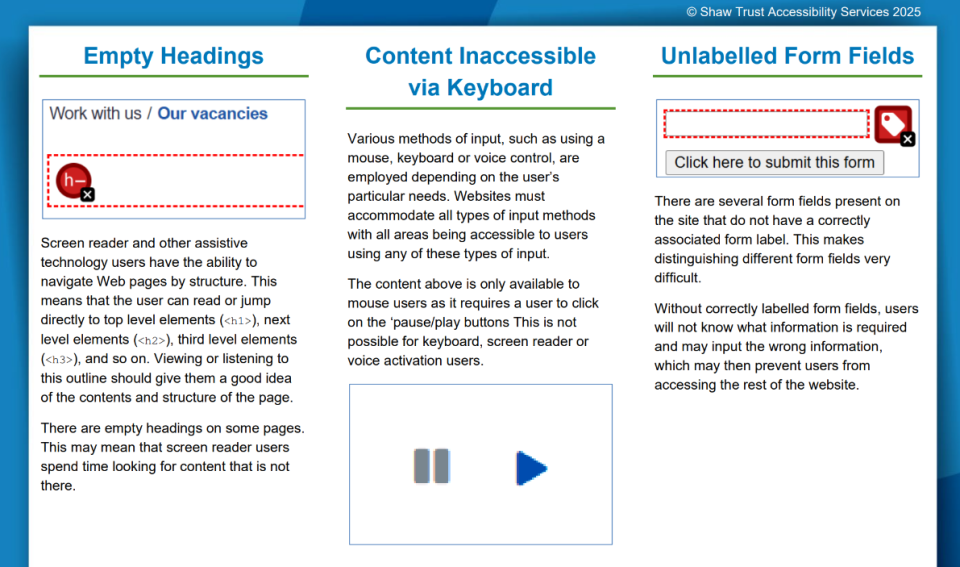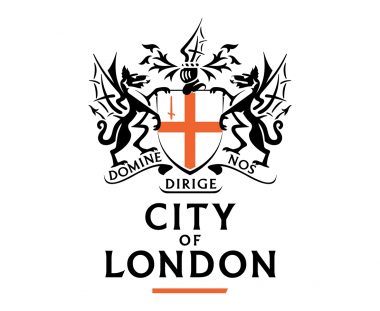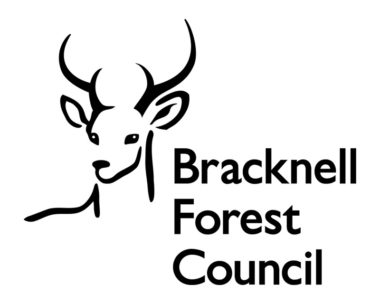In the past, people often didn’t think about making websites easy for everyone to use (accessible) until after the site was already built. Trying to add accessibility features later usually meant extra costs and didn’t always produce the best results. Fixing things afterwards was often tricky and inefficient.
However, there’s a much better way: making accessibility a priority right from the very beginning when planning and building a website.
When accessibility is part of the plan from day one, the benefits are significant. Developers can create an online space that works well for all users, including those with disabilities. Building accessibility in early also makes the development process smoother, cutting down on the need for big changes later on.
Mark Mitchell, a Digital Project Manager at Shaw Trust, learned from experience that overlooking accessibility early on can cause problems. Working with Accessibility Services taught him how crucial it is to focus on accessibility from the start for all future projects.
“Including accessibility in the earlier stages of the Shaw Trust website project became much smoother by collaborating with Accessibility Services. Their expertise and dedication ensured a smooth process,” says Mark Mitchell. “Clear communication and a deep understanding of accessibility standards meant we could create a website that’s compliant and user-friendly for everyone.”
From a website owner’s perspective, putting accessibility first brings many advantages:
- Better experience for everyone: It improves how easily all visitors can use the site – things like finding their way around (navigation) and understanding content become simpler.
- Improved search rankings: Accessible websites often rank higher in search engine results (like Google) because search engines favour sites that are easy to use.
- Wider audience: It allows more people to use your website. By ensuring your site works with tools like screen readers (which read text aloud) and voice recognition software, you can reach people who couldn’t access your content or services before.
- Future-ready: Accessible websites are better prepared for the future. By following well-known accessibility standards (like the Web Content Accessibility Guidelines, or WCAG), you build a strong foundation. This makes your site easier to update for new technologies and user needs, reducing the chances of it becoming outdated or needing expensive fixes later.
Why prioritising digital accessibility matters
In today’s digital landscape, making sure websites are accessible isn’t just a legal requirement– it’s the right thing to do. By treating accessibility as a fundamental part of design, we can create a fairer digital space where everyone has the opportunity to participate.
As Mark Mitchell’s experience shows, the best way to create a more accessible web is to be proactive and make inclusion a priority from the very start. Learn from past mistakes – involve accessibility experts and think about accessibility early for a smoother development process and a website that truly welcomes everyone.
If you’re looking to identify gaps or weave accessibility throughout your design process, Shaw Trust’s Accessibility Services can help with both consultancy and training. If you’d like your website checked for accessibility issues, please enter your details in our website accessibility checker. Alternatively, for more information, please contact Accessibility-Services@Shaw-Trust.org.uk.







